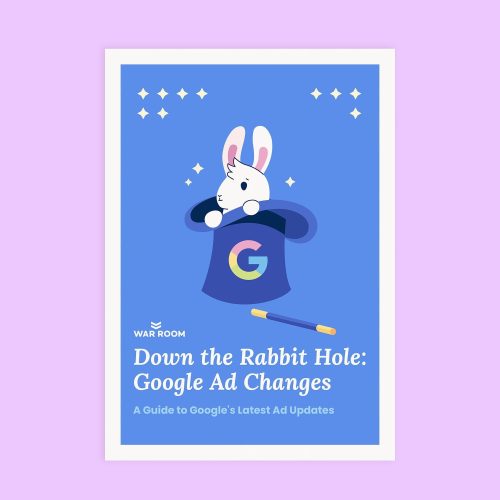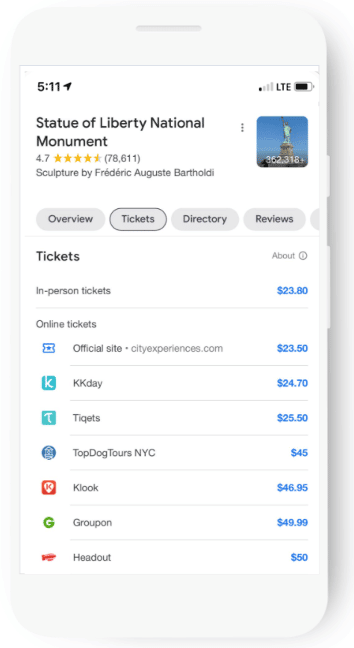In the past two years, there has been many changes to Google Ads. It’s almost too hard to keep up!
But, as a digital advertising agency, this is our bread and butter and we love constantly learning and evolving as the industry continues to grow. We keep on top of these changes and adapt so our clients don’t have to stress about them at all.
Since 2021, we’ve seen many Google Ads changes, such as privacy concerns, new ad options, loss of search query data etc.
Our guide covers the Google Ad changes you should know, alongside with trends and predictions for 2023. As always, War Room is here to take the fear out of digital advertising for you, so we’ll provide examples and resources, so you can continue to successfully rock your campaigns!
This blog will be a live document and we will continuously update it with new Google ad changes.
PS: We thought this content is extremely helpful for marketers, so we created an eBook version of it, download it below:
Overview of PPC Ads
First of all, Pay-Per-Click ads are essential to any digital advertising strategy. It covers the customer journey from awareness, and consideration to conversion.
Google is the world’s largest search engine. And guess what? They also own the world’s second-largest search engine: Youtube. Google Ads dominates the PPC category like no other. As one of the biggest global ad platforms, it’s constantly shifting and adapting to new trends and needs by consumers and technology. Marketers tend to yield great results from Google Ads, but in no way is it easy to use. It requires finessing and is not a set-and-forget platform at all.
Data Tracking
Tracking user behavior and collecting data is crucial for any PPC campaign. It gives you a holistic view of how your ads perform and how people interact with your website. You won’t know how to optimize and improve your campaign if you don’t analyze the data insights.
Proactive Monitoring & Optimizing
Analyzing data should be constant and routine during the campaign flight. If some numbers aren’t adding up, it would be indicators for you to potentially make adjustments to:
- Ad budget
- Keywords
- Ad groups
- Tracking codes
- Target Audience
- Segments
Being proactive and making data-informed decisions is how you make the most out of your ad dollars.
The key themes we’ve identified amongst most of these Google Ad changes are:
- First-Party Data
- User Privacy
- Artificial Intelligence / Machine Learning
Let’s dive in.
Google Analytics 4 Proves First Party Data is King
User privacy has been a buzzing topic in advertising. Google announced that Universal Analytics will be retiring in July 2023.
Google has officially announced that “Universal Analytics” (Google Analytics as you currently know it) will officially be sunsetting in July 2023. This means all websites should prepare for the switch to Google Analytics 4.
Read our in-depth blog on this pressing topic.
Responsive Search Ads Replacing Expanded Text Ads
In June 2022, Google sunsetted Expanded Text Ads. In its place, Responsive Search Ads have been introduced as the default ad type for Search campaigns.
Google says that Responsive Search Ads drive incremental conversations better and require less ads.
How it works: Enter up to 15 headlines and 4 descriptions.
Google will serve the right combination based on the user that has come across your ad.
Let’s say you want to promote your nutrition consulting business. You can utilize Responsive Search Ads to showcase a few different value propositions, such as:
- Free 30-Minute Consultation
- 25% Off First Three Months
- Bundle with Local Meal Delivery
Google allows you to add three value propositions, and will then show combinations to the right audience. For example, a gym enthusiasts might enjoy the free consultation, discount shoppers might enjoy the promo, and working moms might prefer the bundle deal the most.
You will be responsible for ensuring all your keywords and copy combinations make sense.
Pro-tip: Google Ads allows you to pin certain copy options, so they’re displayed all the time. Be sure to pick wisely.
Note that when evaluating the performance of your Responsive Search Ads, Google will show you the best performing combination, instead of individual headlines or descriptions.
Responsive Search Ads feature “Ad Strength”, where Google’s algorithm provides you with feedback on your messaging. It will show you how well your ad creative follows their best practices for optimal performance. The higher the Ad Strength, the more likely the better your ad is perfomrning.
The feedback is twofold: the overall effectiveness of an ad, and also the action you can take to improve your ad.
Google claims: “ Advertisers who improve their Ad Strength for Responsive Search Ads, from “Poor” to “Excellent”, can see approximately 9% more clicks and conversions on average.”
Responsive Search Ads deliver more personalized ads at scale! RIP, expanded text ads.
Engaged-view Conversions (EVCs)
Engaged-View Conversions cater to video ads on both Google and Youtube and the various user behavior when viewing a video as opposed to other types of ads.
Here are the campaign types that track Engaged-View Conversions:
- App campaigns
- Display campaigns
- Video campaigns (TrueView for actions and Video action campaigns)
Users have a strong intent to watch the content they went to Youtube for, and they’re more likely to stay on the platform when they come across an ad during their viewing experience. 70% of Youtube viewers said they’ve purchased from a brand as a result of discovering the brand via Youtube.
When it comes to Youtube, users might not take action directly after viewing. They typically take action after they finished their Youtube watching session.
An Engaged-View Conversion is when a user views a skippable, in-stream ad for a minimum of 10 seconds and converts within the Engagement-View Conversion window.
The conversion window vary amongst different ad types:
- Video action campaign: 3 days
- TrueView for action campaign: 3 days
- App campaign for installs: 2 days
- App campaign for engagement: 1 day
- Display campaigns: 3 days
Engaged-conversion rates are great for:
- Measuring performance delivered by direct response video ads
- Has a better indication of user engagement
- Gives brands a better understanding of the value of their ads
- User behavior insights help you navigate your target audiences’ viewing habits, devices etc
With this new attribution model, you can expect to see more conversions come through! It will help with a holistic overview of the customer journey.
New Google Ads Scripts
Google Ad scripts enable you to make automated changes to your ad account flexibly and effectively. With custom Javascript, you’re able to:
- Add keywords
- Edit bids
- Pause ad groups…and more
Google states that the new and improved scripts feature more sophisticated query language that is easy to use for developers.
It will empower you to:
- Process more campaigns, ad groups and keywords in the same amount of time
- Work at a bigger scale
- Better script validation process
Destination Requirements Policy Update
Google announced that its Destination requirements policy update would include a new policy. It now requires all destination ad experiences to conform to the Coalition for Better Ads’ “Better Ads Standards”.
The Coalition’s Better Ads Standards assess if an ad experience does not meet the threshold of consumer acceptability. Essentially, if an ad that is delivered is irrelevant, spammy or off-putting, consumers are more likely to install ad blockers. We don’t want that in the ad industry!
See here for examples of undesirable ad experiences.
Those that don’t conform will be notified by the Ad Experience Report and be disapproved. They began enforcing this policy in October 2022.
This is only applicable if your website hosts external ads.
Search Campaign Smart Bidding Changes
Smart Bidding refers to bid strategies that use machine learning to optimize for conversions or conversion value in each and every auction—a feature known as “auction-time bidding”. Target CPA, Target ROAS, Maximize Conversions, and Maximize Conversion Value are all Smart Bidding strategies.
If you run Search campaigns, you’re probably familiar with Smart Bidding. It utilizes machine learning to optimize conversions or conversion value for every auction (a la auction-time bidding).
There are a few different strategies, including:
- Target CPA
- Target ROAS
- Maximize Conversions
- Maximize Conversion Value
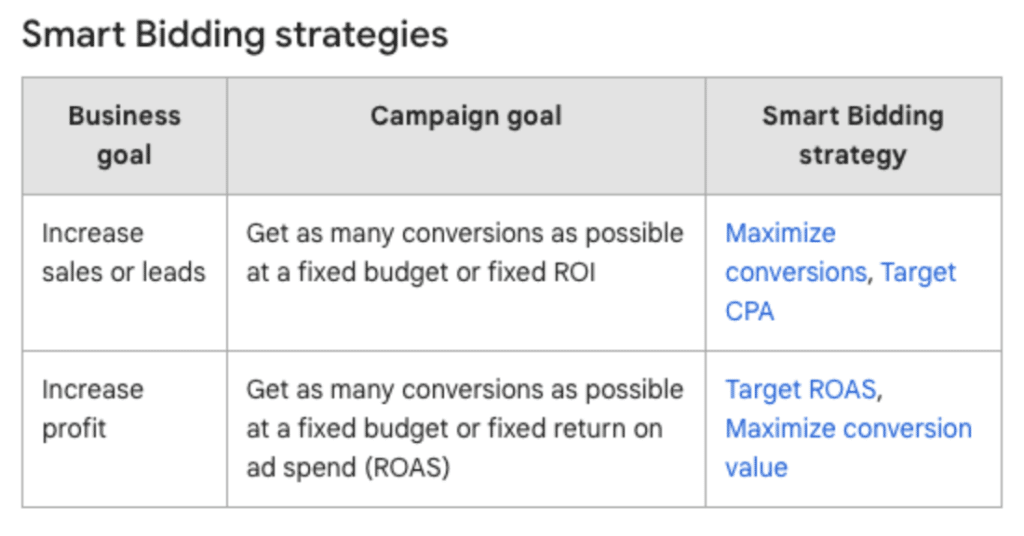
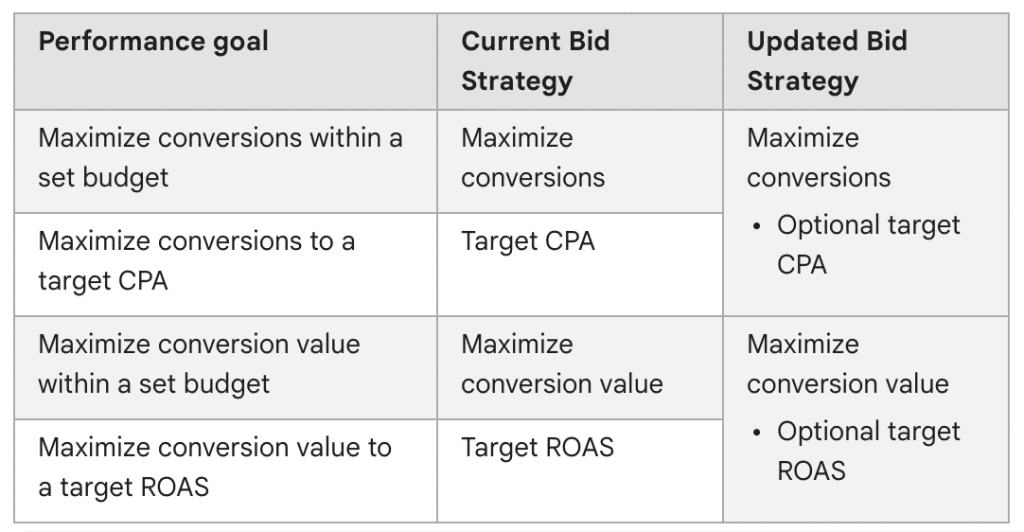
Google renamed existing standard “Target CPA” campaigns to “Maximize Conversions” with a target CPA.
- Existing standard “Target CPA” campaigns will be renamed “Maximize Conversions” with a target CPA.
- Existing standard “Target ROAS” bid strategy campaigns will be renamed “Maximize Conversion Value”.
You’ll still be able to use “Target CPA” and “Target ROAS” as bid strategies, but they’ll simply be either bundled with “Maximize Conversions” or “Maximize Conversion Value” bid strategies.
- “Maximize Conversions” = Optional Target CPA
- “Maximize Conversion Value” = Optional Target ROAS
It’s important to note that there won’t be any impact on bidding behavior from this update. No action is needed to be taken. This only impacts Search campaigns, not any other campaign types that also use Smart Bidding technology.
Google Shopping Attribute Updates
What’s the first step people do when they want to look up something they want to purchase? They Google it! That’s why if you sell products, Google Shopping Ads are essential to your digital strategy. And lucky for us, Google has been making its Shopping Ad offerings better and better!
You’re able to offer more information than ever about your products and showcase why your brand should be the consumer’s choice.
There were some updates you can now utilize:
Product Attributes
Elaborate on your product! Give shoppers more context, such as:
- Size
- Colour
- New vs Used
Holiday Annotations
Utilize effective copywriting to create a sense of urgency for holiday promos. For example: “Order Now, Receive Before 12/24”, “60% Clearance On Now”.
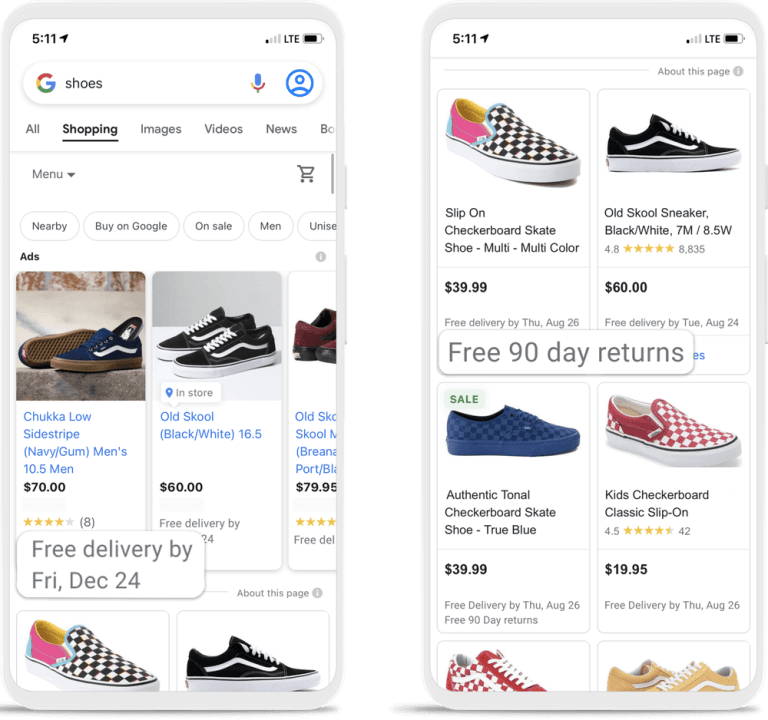
In-Person or Online
Shoppers don’t just turn to Google to buy things online. They also use it to look up offline shopping options.
So if you have a brick-and-mortar store that offers online shopping, it’s crucial to show up for both online and in-person shoppers. To do so, make sure your Google My Business profile is up-to-date.
Showcase the products your store has in-stock with Google My Business. Additionally, explore alternatives to Google URL shortener to manage and track your links effectively.
With Local Inventory ad campaigns, you can highlight items available for curbside pickup!
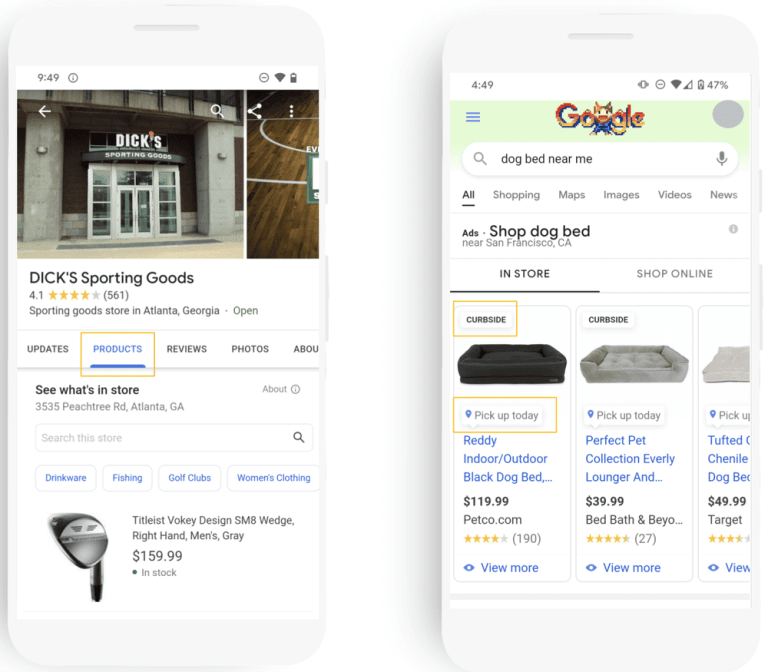
Annotations
You’re able to utilize annotations to communicate unique offerings with your products and help it stand out from the competition. Examples are:
- Sale Prices (showcase the sale price next to the base price)
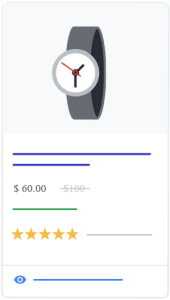
- Free or Fast Shipping
- Price Drop (Instead of crossing out the base price and showing the sale price, it shows the percentage of the price drop)
- Merchant Promotion (you can manually add special offers like a freebie, BOGO, or free shipping)
- Product Ratings (Sync it with your reviews feed)
- Buy on Google (You can allow shoppers to directly purchase on Google cart)
- See Below (You can add “see below” and show additional information about your product offerings)
If done properly, your shoppers will be enticed to click on your ads!
New Policies Added to Strikes System
Google has tested and implemented a three-strike system that penalizes advertisers that don’t follow their rules. They added more policies for advertisers to avoid. These rules had always existed, but are now integrated into the three-strikes system.
Here are the nine new “no-no’s” for advertising:
- Clickbait
- Misleading ad design
- Bail bond services
- Call directories or forwarding services
- Credit repair services, binary options and personal loans
- Compensated sexual acts
- Mail-order brides
There are three main categories for ads that earn violations, which include:
- Enabling dishonest behavior
- Unapproved pharmaceuticals or supplements
- Dangerous products or services
Three Strikes Breakdown
You will first receive a warning, when your ad violates one of Google’s policies and the ad will be removed. Then, you get entered into the three-strike system.
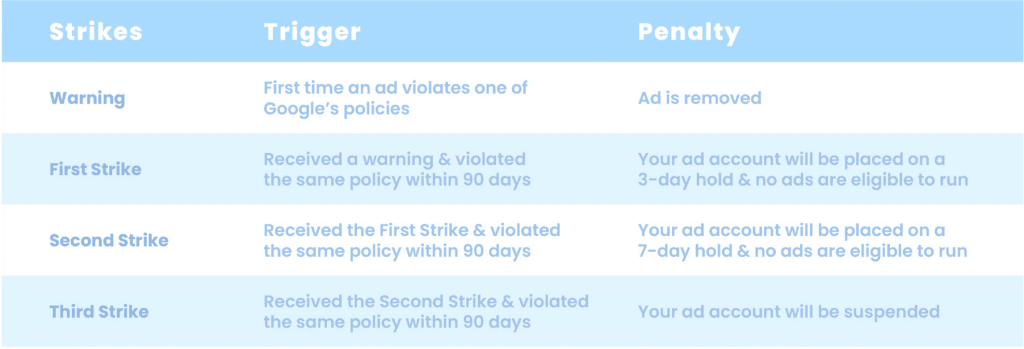
Note: If you received a First or Second Strike but avoid violating Google Ad policies for 90 days, your strike will expire and it resets.
This is definitely important to keep in mind to ensure your account abides by the guidelines so you can avoid all warnings, strikes, and account suspension!
If you’ve received a first strike previously, War Room can help you to avoid future strikes and ensure campaign success. For all of our clients, we review your ads and ensure they abide by the guidelines for every ad platform prior to launch.
Improved Travel Ads
Post-pandemic “Revenge Travel” is in full swing as restrictions for travel ease & borders open up. People are starting to travel again, both domestically and internationally, so being on Google Ads is a sure way to capture prospective travellers.
Things to Do
A new ad type is now being offered, called “Things to Do”. You can now reach travellers who show interest in a destination. Travellers will be able to:
- Find nearby activities, attractions, and tours
- Visit your website to buy tickets
- Be inspired by photos and imagery
- Photos
- Pricing (even seasonal pricing calendar)
- Company name
- Booking link
- Customer reviews
- Map
Your ad will sync your product feed and business information and show up for relevant travellers and potential customers on Google. Google says they introduced this option to help brands “drive additional revenue and bookings as recovery continues”19.
War Room now offers direct integration for our clients.
So if you’re a travel and tourism brand, this is a new ad change option that will help capture interest directly in the search engine result page!
Better Youtube & Display Attribution Models
Since Apple’s iOS 14 privacy update, advertisers have had a tougher time attributing specific ads & interactions on Youtube and Display campaigns.
Note: Server Side Tracking is the solution to better attribution in the long run. Connect with us to learn more about how we can help you better track ad data as your ad partner!
Privacy changes seem to be the norm nowadays, which makes attribution harder. Previously, you might have been able to see clicks on the ad, but if a user checked out your website before converting, it wouldn’t be logged in Google Ad conversions.
As of August 2021, Google has now added attribution modeling to Youtube and Display ads20! This can help you better understand your target audience’s customer journey. Your audience may interact from multiple ads or brand touchpoints before making a conversion. Attribution models allow you to track each interaction and decide how important each step was to achieve the conversion.
If you know your average customer needs to see 2 of your ads to convert, you’ll be able to tailor your campaign strategy to more effectively reach your audience.
Crediting the right channel for the users’ conversion depends on what attribution model you’re using. There are 6 types of attribution models that Google offers:
Last Click
Assigns conversion credit to the very last touchpoint of the user before converting; great for determining which channel drives the most conversions.
First Click
Assigns credit to the very first touchpoint of the user; helpful to determine what channels drive new consumers.
Linear
Equally credits every channel the user interacts with; A holistic way to look at your overarching marketing strategy.
Position-Based
Assigns credit to the first & last clicks; Good as an overview of the entire conversion journey, as it recognizes that the most important touchpoints are generally the first and last clicks.
Time Decay
Distributes credit in increased increments to each channel as it gets closer to the conversion; helps you focus your ad dollars on bottom-of-the-funnel channels to improve conversion rates.
Data-Driven
Lets you precisely map out your customer touchpoints, based on previous customer behavior and data.
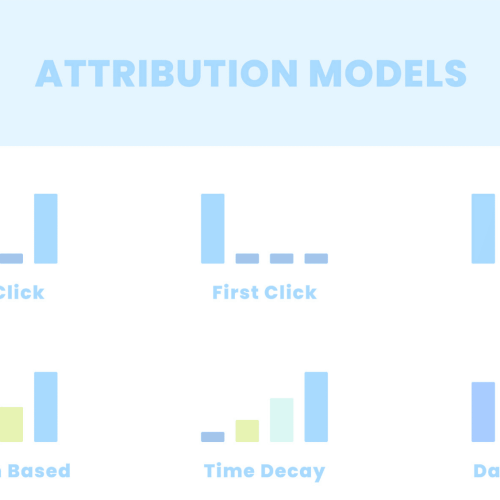
Google’s machine learning technology for their ads helps advertisers so much in learning about consumer behavior. We use attribution to understand the customer journey and identify the touchpoints that drive the most conversions.
So the next time you plan a campaign, select an attribution model that would best measure the performance. It might even be useful to test out a few–you’ll find the one that works best for you!
There’s no right or wrong answer. Ultimately, the suitable attribution model for your business would be the one you can learn the most data information from, create even more effective ad campaigns, boost revenue and achieve a better Return on Ad Spend.
Content Targeting Discontinued for Youtube Conversion Campaigns in 2023
Content targeting is one of Youtube’s most powerful targeting features. Advertisers can match ads to specific channels or videos to deliver a more personalized message and experience.
However, that’s coming to an end in 2023. Any Youtube video conversion campaigns with existing content targeting set will be undone by 2023.
Google will keep it available for other Youtube ad types.
Keyword targeting is also being removed. Even though keywords aren’t as robust compared to Google Search, advertisers have been able to answer queries with video content.
If you’re running placement/keyword/topic targeting, this might cause some issues. The opportunity to finesse and fine-tune ads, channels or videos or use of keywords will no longer exist. Talk to us to learn how to work around this.
What this means is less targeting will lead to your ads reaching a larger audience, perhaps even spending more on less qualified users.
Youtube ads offer powerful targeting options, so this is quite the major blow.
It’ll be on us advertisers to quickly adapt and pivot!
Note: Performance Max ads are a great way to fill in the gaps for your digital strategy.
If you want optimized ad performance while making the most out of your ad dollars, we recommend trying out Performance Max ads. It utilizes machine learning to automate the audience targeting and ad delivery format, based on the information provided when setting up the campaign.
Based on the creative assets you provide, the creation of the actual ad will be automated too. Then, the ad platform will run your campaign based on your specified conversion goals!
Diversifying your ad channels and types will keep your strategy agile and flexible. As your ad partner, War Room stays current on these changes and will make alternative recommendations for adjustments and budget allocation promptly.
Aside From Google Ads, You Need Diversification
PPC will only get you so far. Google Ads have so much to offer, but you need to diversify your marketing strategies: both paid and organic.
If you’ve got a great PPC strategy, you need to work on SEO and create quality content. Be active on social and engage with your audience! Then, double down and further promote your brand’s content through paid ads.
This is the fool-proof way to ensuring the longevity of your business.
How Do I Find the Right PPC Agency?
When looking to partner with an ad agency, it’s important to assess certain criteria. Let’s say you’re great on the strategy side, then seek a partner that can execute brilliantly. Here’s are some important questions to ask them:
- How’s your creative performing?
- What’s your cross channel strategy?
- How do you track attributions to ensure your optimizing correctly?
- How do you show ROAS?
- What’s your agency’s specialization?
- Have you worked with other businesses in my industry?
- If so, what were the results? Do you have a case study?
- What does success look like for your team and business?
For a more detailed list of questions, be sure to download our guide: “Questions You Should Ask Before Hiring a Marketing Agency”.
The agency should be be knowledgeable about your industry’s competition and best practices. Experience and expertise is key, but also rapport. So the agency you pick should align with your goals and are invested in your success as much as you are!









